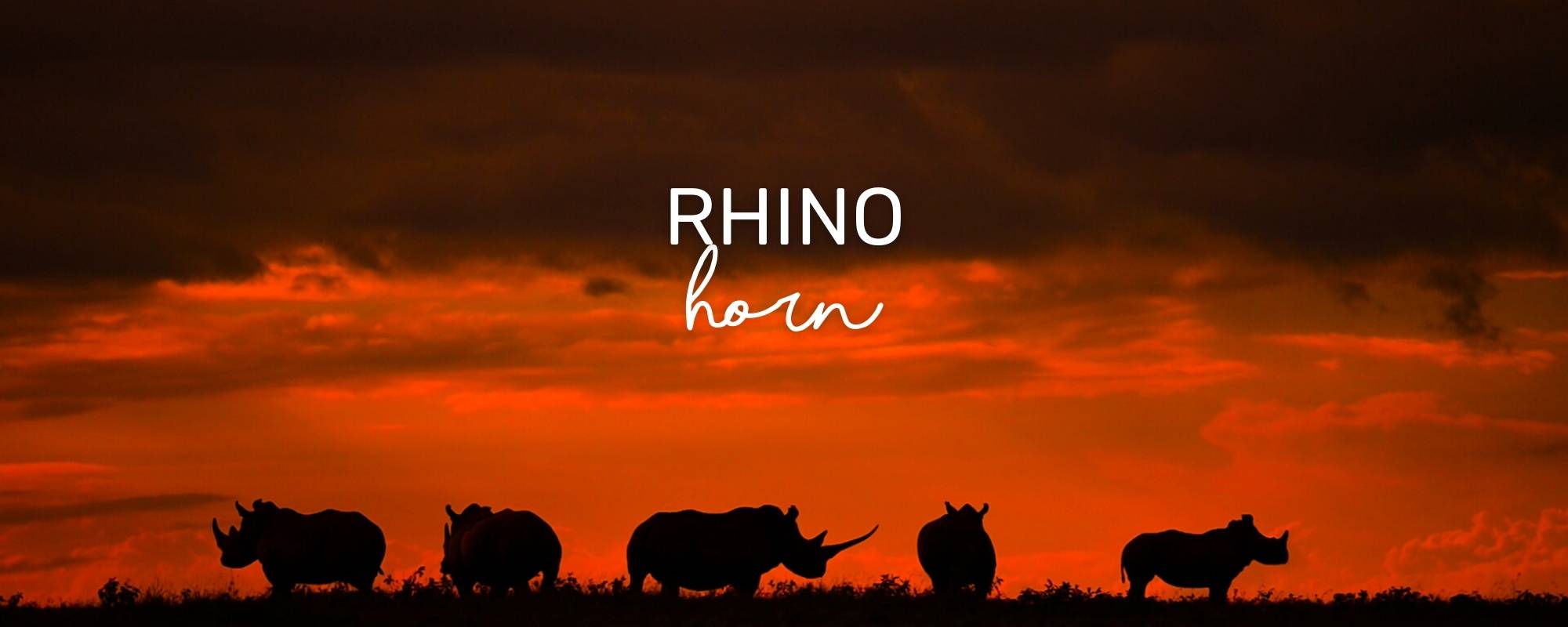
What about rhino horn?
Posted on
Worth more than its weight in gold, rhino horn – made of pure keratin – fetches over US$60,000 per kilogram.
Almost 10,000 rhinos have been lost to poaching in the last decade, meaning each year, around 1,000 rhinos have been killed illegally for their horn, which boils down to an average of 2.7 rhinos poached every day.

This is a brutal process that leaves many hundreds of rhino calves orphaned and poached rhinos mutilated and fighting for their lives. This tragedy has spearheaded our charity jewellery creation, and in an attempt to do our part to support the anti-poaching initiatives in southern Africa, we have partnered with reputable charities to create bracelets that generate much needed funds.

Offering some form of relief, the number of rhinos poached each year since 2018 has been steadily declining and last year, fewer than 400 rhino were poached in South Africa – the lowest in 10 years.
We have the incredible organisations such as Nkombe Rhino, Rhino Rescue Project, Invictus K9, Saving the Survivors, and Rhino Revolution to thank for that.

May the downward trend continue! If you would like to help support any of the abovementioned organisations, you can do so by purchasing from our range of uniquely designed beaded bracelets, each of which directly donates 50% of what you pay to the linked charity. These funds are assigned to the charity on an annual basis, injecting much needed funds into their rhino conservation efforts.
If rhino horn has you wondering, here are some frequently asked questions to help you stay informed:

What is in a rhino horn?
Rhino horn is made of keratin – similar to horses’ hooves, turtle beaks, cockatoo bills, and the very same material as our hair and fingernails. Save the Rhino says on a chemical level, horns contain large quantities of sulphur-containing amino acids, particularly cysteine, as well as tyrosine, histidine, lysine, and arginine, and the salts calcium carbonate and calcium phosphate.
What is rhino horn used for?
“Rhino horn has been used in Chinese medicine for more than 2,000 years and is used to treat fever, rheumatism, gout, and other disorders. It also states that the horn could also cure snakebites, hallucinations, typhoid, headaches, carbuncles, vomiting, food poisoning, and ‘devil possession’.”
Science says there is little evidence to support any medical efficacy in rhino horn and these beliefs are purely fuelled by urban legend and tradition.

How much is a rhino horn worth?
Rhino horn can fetch up to $60,000 (£48,000) per kilo according to an article in The Guardian.
Where are rhinos most poached?
South Africa holds the majority of the world's rhinos and has been the country hit hardest by poaching criminals, with more than 1,000 rhinos killed each year between 2013 and 2017. The Kruger National Park – despite being a protected area – loses the highest number of rhinos each year.

Is it legal to trade rhino horn?
No. International trade has been banned under CITES since 1977; however, it is legal to trade rhino horn domestically in South Africa.
How many rhinos are left?
According to World Wildlife Fund: “At the beginning of the 20th century, 500,000 rhinos roamed Africa and Asia. By 1970, rhino numbers dropped to 70,000, and today, around 27,000 rhinos remain in the wild. Very few rhinos survive outside national parks and reserves due to persistent poaching and habitat loss over many decades.”

Written by Chloe Cooper
Don’t miss out on future posts so be sure to sign up for our Wild Tribe (scroll below to sign up).
New products and discounts first!
RETAIL STUDIO
The Farm House, R527
Hoedspruit LP South Africa
. . . . . . . . .
HEAD OFFICE
65/2 Arbor Ave, Robina
QLD 4226 Australia
. . . . . . . . .
contact@wildinafrica.store
